Your IGA tools aren't the problem. Your fragmented setup is.
Many IT teams assume access management challenges stem from outdated processes or siloed teams. But in reality, the underlying issue often lies deeper, in the structure of the identity governance model itself.
There are two dominant IGA models used today:
- Disparate IGA: where tools for provisioning, access reviews, access requests, and SaaS visibility are isolation.
- Converged IGA: where these capabilities operate within a single, unified platform.
What most organizations don't realize is that the model they choose has a direct impact on how efficiently they can enforce least privilege, detect access risks, and meet compliance deadlines.
This article breaks down:
- The key differences between the two models.
- Outlines the operational and security risks of a fragmented approach
- Helps you determine which model is built for current & future needs
Disparate vs Converged IGA: What Is The Core Difference?
.png)
At a structural level, the difference comes down to whether your IGA tools operate independently or as part of a unified system.
- In a disparate IGA model, tools for access management, access review, access request management, and SaaS management operate in silos. They don’t share data, require separate configurations, and often force IT teams to manually bridge the gaps between systems.
- In a converged IGA model, these capabilities are integrated within a single platform. Data flows seamlessly between access review, provisioning, and app usage insights, enabling centralized visibility and more consistent governance.
This structural difference has real operational consequences. A disparate model introduces inefficiencies, delays, and blind spots. A converged model lays the groundwork for automation, faster review, and proactive access control.
Who Typically Uses the Disparate IGA Model & Why?
Many organizations rely on disparate IGA setups, often by choice, and sometimes due to circumstances.
.png)
Group 1: Organizations That Have Legacy Systems
Organizations often end up with a disparate IGA setup because they have outdated legacy systems and applications in place – tools that cannot be easily reconfigured to integrate with other systems.
(Note: This situation is an example of a choice made out of circumstance, not preference)
Group 2: Organizations That Prefer Best-of-Breed Solutions
Some organizations deliberately choose this disconnected IGA model because it provides them with the flexibility to select separate best-of-breed solutions for each IGA workflow/operation. They assume that by deploying multiple standalone solutions, they will achieve better outcomes.
(Note: This is an example of a choice made out of preference)
Group 3: Organizations That Are Unfamiliar With the Converged IGA Model
There is a third group of organizations that haven’t adopted a disparate IGA model out of legacy constraints or strategic choice – they simply don’t know a better alternative exists. They are completely unaware of the converged IGA model and its advantages.
Key Drawbacks Of the Disparate IGA Model
Even if a fragmented IGA setup seems to “do the job,” it quietly creates operational inefficiencies, security blind spots, and audit headaches. Here’s why the disparate IGA model doesn’t scale well, and what risks it exposes your organization to.
.png)
1. Repetitive tasks drain your team's time & patience
Using separate tools for access reviews, request handling, and SaaS management means one thing: unnecessary duplication of work.
Every time there's a user change or policy update, your team has to:
- Manually update identity and app data across tools
- Sync user status across disconnected systems
- Double-check everything to avoid mistakes
It's not a waste of time; it increases your exposure to errors and inconsistencies.
2. You can't protect what you can't see
Each system holds its own view of users and access. Without a unified picture:
- Excessive or outdated permissions go unnoticed
- Shadow IT bypasses governance controls
- Access revocations happen in one app but not others
This leaves gaps in your access posture, especially for high-risk or sensitive apps.
3. More tools = More cost & complexity
Best-of-breed sounds smart, until the invoices pile up.
With every new tool, you're also taking on:
- Additional licensing fees
- Integration and maintenance overhead
- Training time for each new interface
All of which inflate your total cost of ownership and slow down your team in the process.
4. Compliance reviews become a manual slog
No central view? There is no effective way to scale access reviews.
Your team has to:
- Log into apps one by one
- Export and validate access data manually
- Compile audit reports from multiple sources
This slows down every review cycle and makes audits harder to pass, especially when you can't prove controls are consistently applied.
You might ask – What can be done to avoid these challenges?
Start by rethinking your approach. Instead of relying on disparate IGA models, consider shifting to converged IGA models. How will this transition benefit you? Here’s how.
How Does the Coverage IGA Model Solve These Challenges?
Here, we’ve broken down how the converged IGA model delivers better outcomes by addressing all the gaps that the disparate IGA model presents.
.png)
1. Reduces The Manual Intervention
In a converged IGA setup, applications (such as access management, access request management, access review, and SaaS management) are seamlessly integrated.
- This eliminates the need to manually update identity data across multiple applications.
Once identity/app data is updated in one app’s database, the data is automatically synchronised across all connected apps
- This setup saves a significant amount of your IT team’s productive time
- Also minimizes the risk of human errors – no more missed entries or incorrect data feeding.
2. Closed Security Loop Holes
Since all IGA-related applications are integrated into a single, unified system, it becomes easier to gain visibility into which apps are being used and who has access to them.
With the help of this visibility:
- IT teams can effectively govern access permissions, detect access anomalies, and promptly respond to unauthorized activities—before they become a security gap.
- Also, consistent access control policies can be applied across all connected apps. This reduces the chances of accessing misconfigurations.
3. Comparatively More Affordable
Instead of purchasing separate apps from different vendors, you can choose a single solution from one provider that delivers a full suite of IGA capabilities under one roof (for example, Zluri).
Result?
- No more juggling multiple apps
- No hassle of integrating and maintaining them.
- Reduce the total cost of owning an IGA setup.
After all, why invest in many when one does it all?
4. Easier To Obtain Compliance Certification
Since IGA-related apps are integrated, there’s no need to log into each application individually to gather user access data; you can get all the info in one place.
This means – during access review, you don’t have to search for the accurate data across different data sources. Result?
- Your review timeline will be cut short. No more overshooting review deadlines.
- Your review reports will be more reliable, making it easy to present them confidently during compliance audits and secure certification.
Now, the question is – ‘how to implement a converged IGA model?’ Here how.
4 Steps To Implement a Converged IGA Model
Here are the steps you can follow to implement a Converged IGA model.
.png)
Step 1: Assess Your Current IGA Setup
- List all apps that are currently in use for:
- Access management
- Access requests
- Access reviews
- SaaS management
- Flag apps that:
- Operate in silos (not integrated or sharing data)
- legacy apps (outdated or hard to integrate)
Step 2: Opt For A Converged IGA Platform
Find a unified solution that can address all your IGA needs. Which one to choose?
There are multiple unified IGA solutions available in the market, but the one that truly stands out is Zluri.
- Zluri is a modern IGA platform built on the principles of the converged IGA model.
- Offers a suite of solutions to manage identity lifecycle, incoming access requests, reviews, and SaaS stack – all in one place.
- Plus, all the solutions are integrated and they share/sync data in real-time (in short, they work in sync with one another).
So, no more juggling between standalone/disconnected tools or struggling with manual data syncing.
Step 3: Examine The Performance Of The Converged IGA Platform
Once Zluri is in place, evaluate whether it’s delivering the expected performance.
- Check if it provides complete visibility into your SaaS stack, user identities, and their access patterns.
- Assess whether it's helping to accelerate identity-related operations, meet access review deadlines,
- It can help achieve better review results.
This will help determine whether the platform meets your current requirements and is reliable enough to support your long-term IGA goals.
Step 4: Remove Redundant Standalone/Disconnected Application From Your IGA Setup
Once you are confirmed that Zluri is delivering the designed performance, you can confidently retire the redundant, siloed applications that were previously used to manage individual IGA tasks.
By doing so, you can eliminate overlapping tools that perform similar functions, reduce system clutter, and even reduce unnecessary expenses.
Future-Proof Your Identity Strategy With A Converged IGA Model
Moving to a converged IGA model isn’t only about reducing the number of apps. It’s about making identity governance simpler and faster for your team. When everything works together, from user provisioning to access reviews, you spend less time fixing broken processes and more time focusing on what matters: staying secure, compliant, and efficient.
The real takeaway? Choose an IGA approach that eliminates daily issues and enables your IT teams to perform their jobs with less effort and better outcomes. That’s when IGA becomes a real advantage, not just a requirement.


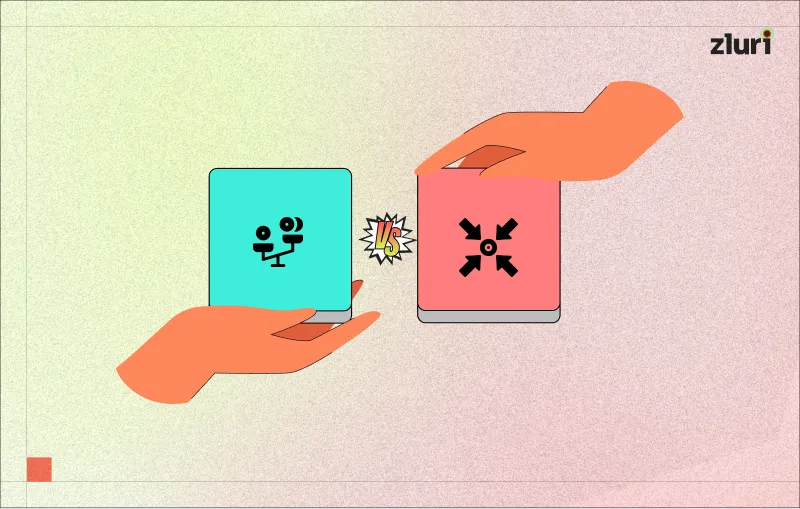






.svg)



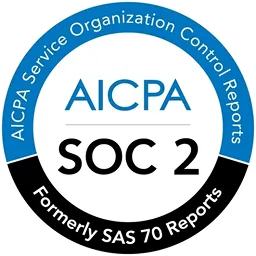
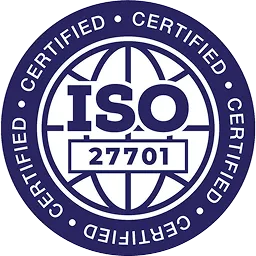
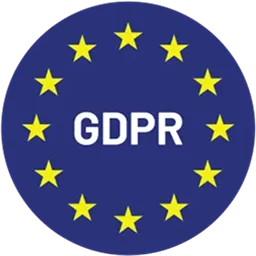
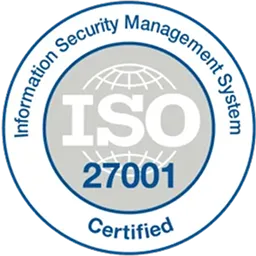

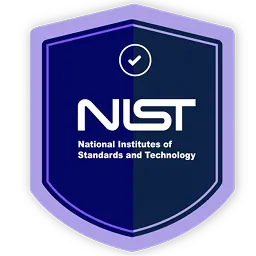
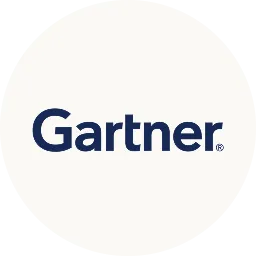


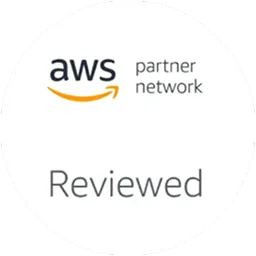








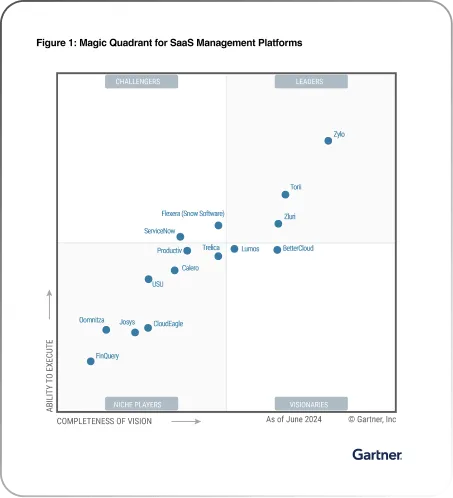







.webp)







.webp)
.webp)





.webp)